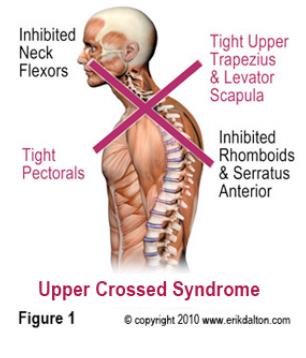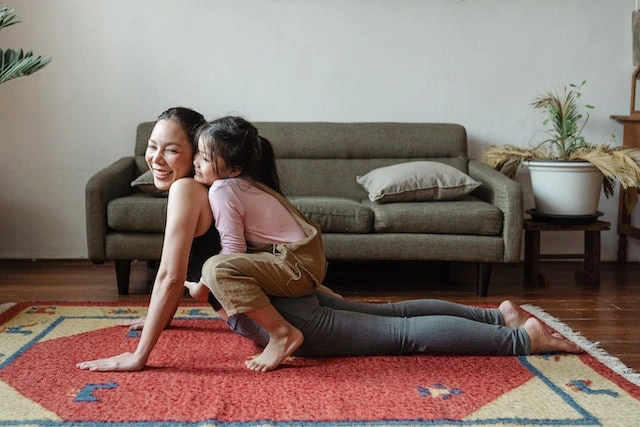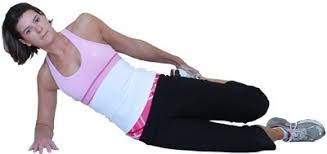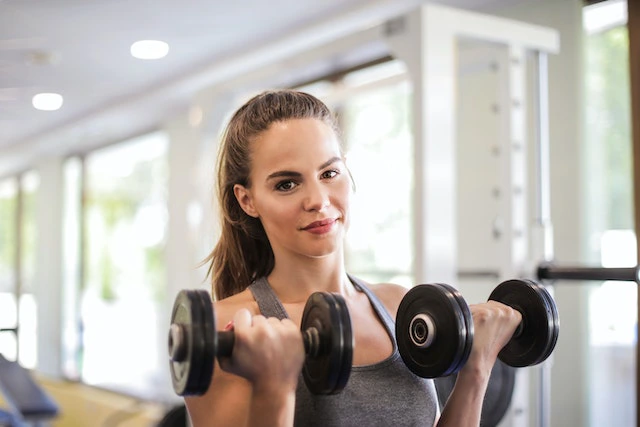How to Build Your Walking Goals the RIGHT Way
As we edge into spring and nicer weather, lots of us want to get out there and just walk, and enjoy the sunshine. After a long winter and an even longer pandemic, we’ve gotten a bit sluggish and out of shape. Here’re a few ways to build your walking goals to get stronger and more fit.
1. Get a good pair of walking shoes. This is an absolute must. Ditch the worn-out tennis sneaker lurking in the back of your closet and get a decent pair of shoes. They don’t have to be expensive, but they do have to be supportive and well-made.

2. Check out your neighbourhood for possible walking routes. Do you live in a rural area, where you’ll have to navigate uneven paths and gravel roads? Or do you live in an urban area, where there are more sidewalks? Do your neighbours have a walking group that goes to a mall a few times a week? Call your local community centre for information on walking groups. Pick outdoor routes that you can switch up for variety. But make sure you can handle the surface you’re going to walk on.

3. Use the building block method to increase your stamina. Pick a goal of, say, 4 blocks for the first week. After that, add 2 more blocks onto your walk; 2 weeks later, add another 2 blocks, and so on. Vary your routes as you add distance to your trek to get some variety.
4. Download a pedometer app for your smartphone – you can track the number of steps you take – another way to measure your progress.

5. Take your dog with you, or ask your friend with a dog to go with you. You both get exercise, someone to chat with, and the dog gets its exercise too – a win all around! No dogs around? Ask your neighbour with a toddler or a baby in a stroller to go with you .

6. Build your small errands into your walking time. Do you have to pick up a thing or two at the grocery store, or drop off a book at the library? Plan a new route around these errands, and you’ll see your neighbourhood in a different and interesting way. Bonus – you get your errands done without extra time!
I can help you get into shape and plan your fitness goals – contact me at:
519-572-0986
www.fitability.ca
Cardiovascular Training
Aerobic exercise is a vital part of any training program.
Yet many of us aren’t sure of what type to do, for how long, or how often. As a personal trainer, I apply the FITT principles to any kind of physical activity – Frequency, Intensity, Time and Type.
Most of us should aim to do aerobic activity between three and five times per week, for 30-45 minutes per session. This means getting your heart rate elevated for a sustained period of time, and you should feel tired, but not flat-out exhausted, at the end of it. This brings us to the intensity of your cardio workout.
People new to exercise may want to stick to a moderate pace, still getting to fatigue, until these workouts become easy, and they notice that their results – cardiovascular endurance, weight lost – are plateauing. At this point I encourage clients to vary their cardio workouts both in intensity and duration, or time. First, I get the client’s resting heart rate, and determine the range of elevated heart rate we’re going for. Then I set them up into different types of cardio challenge, varying the type within the week. The client may be doing up to four types of cardiovascular challenge: Long Slow Distance, Continuous Interval, and Supramaximal Training. Here’s what such a program might look like (the bpm – heart rate – is a suggestion and will change for each person).
AEROBIC FITNESS STRATEGY
Let's define a few things:
- LSD (Long Slow Distance) refers to 60-80 minutes: continuous aerobic exercise at moderate intensity, and bpm = 121-146
- Continuous Interval Training refers to 30-60 minutes: alternate 3 minutes bouts of low and high intensity. Low bpm = 51-67, High bpm = 134-152
- Tempo Training: refers to 30-60 minutes continuous aerobic exercise at high intensity, bpm = 159-177
Supramaximal Training: refers to 15-20 supramaximal exercise bouts for 1 min., with 2-5 min. active rest between bouts (walking briskly to next cardio station or going much more slowly on the same cardio exercise). Supramaximal = your top speed
Let's get to the workout!
WEEK 1:
WARM-UP: Stationary bike, treadmill, elliptical, low to moderate pace, for 7 to 10 minutes.
AEROBIC ACTIVITY: Get 150- 200 minutes, total cardio (not counting warm-up time) per week
- Session 1: LSD (Long Slow Distance) for 60-80 min: Bpm = 121 to 146
- Session 2: Tempo Training
- Session 3: Continuous Interval Training
- Session 4: Supramaximal Training
WEEK 2:
- WARM-UP: Stationary bike, treadmill, elliptical, low to moderate pace, for 7 to 10 minutes.
- AEROBIC ACTIVITY: Get 150- 200 minutes, total cardio (not counting warm-up time) per week
- Session 1: Supramaximal Training
- Session 2: LSD (Long Slow Distance) for 60-80 min: Bpm = 121 to 146
- Session 3: Tempo Training
- Session 4: Continuous Interval Training
WEEK 3:
- WARM-UP: Stationary bike, treadmill, elliptical, low to moderate pace, for 7 to 10 minutes.
- AEROBIC ACTIVITY: Get 150- 200 minutes, total cardio (not counting warm-up time) per week
- Session 1: Continuous Interval Training
- Session 2: Supramaximal Training
- Session 3: LSD (Long Slow Distance) for 60-80 min: Bpm = 121 to 146
- Session 4: Tempo Training
WEEK 4:
- WARM-UP: Stationary bike, treadmill, elliptical, low to moderate pace, for 7 to 10 minutes.
- AEROBIC ACTIVITY: Get 150- 200 minutes, total cardio (not counting warm-up time) per week
- Session 1: Tempo Training
- Session 2: Continuous Interval Training
- Session 3: Supramaximal Training
- Session 4: LSD (Long Slow Distance) for 60-80 min: Bpm = 121 to 146
As for the type of cardio activity to do, it’s important to vary your challenges. If you enjoy cycling classes, recognize that this works the quadriceps and hip flexors particularly, and choose other activities, such as swimming, aerobic classes, kickboxing, elliptical, treadmill, snowshoeing or skiing to round out your cardio workouts. This is a good way to avoid overuse injuries of any particular muscle group.
Punctuate Your Posture!
Do you look like a comma when you look in the mirror? Do your neck, shoulders and head hurt? If this is you, you need to change your posture from a comma to an exclamation mark!

Here are four tips to get you standing and sitting better.
- Practise sliding your shoulder blades downwards. Think "sliding them into your back pants pockets". This will allow you to extend through your thoracic spine - the part of your spine that runs between the base of your neck and the middle of your back. This will help you to open up through your chest and take your shoulders away from a very rounded position. Do several of these every day. (Get up from your chair and do them!)
- Stretch your upper trapezius and levator scapulae (upper back and neck muscles), and your pectoral (chest) muscles. A bent-over, flexed-spine posture encourages these muscles to tighten and restricts proper movement.
- Do chin tucks daily to strengthen the muscles that keep your head aligned over your shoulders (upper thoracic extensors). When you have done these for a couple of days, combine the tucks with Tip #1, sliding your shoulder blades downwards. To add resistance, hold a light or medium strength tubing in your hands, with thumbs pointing up to the ceiling. As you pull your hands away from each other, do the chin tuck and shoulder blade slide.
- Strengthen your abdominal muscles. Start with the basics like the abdominal vacuum and plank. You can then add side to side movement to the plank, or raise one arm off the ground for a few seconds to intensify the work in your abs. Avoid crunches or curl-ups - they pose risk to the lumbar spine, and encourage poor and painful neck movement.
Push-Ups: Which Version is Best for You?
How Did You Do That? 3 Secrets to Fix Your Knees.
“My knees hurt! When I exercise, my knees hurt, and there is knee pain when I sit and rest, even when I sleep.” This is one of the most common complaints I hear about exercising, and here are the 3 top tips to help fix your cranky knees!
Here’s what you and I can do to help the pain in your knees.

The first thing I do with a client with knee pain is a movement assessment – Muscle Activation Techniques (MAT). This will show me what muscles aren’t working properly. Muscles that are asleep at the switch can’t support your weight and your movements. Stress and strain on the knees are among the most common side effects of non-functioning muscles. Restoring function to these muscles through MAT is the top treatment.
After that, we have to look at other reasons why the knees are painful. Did you suffer a trauma to the knees? To the hips? To the ankles? You may be surprised to learn that, unless there has been direct trauma to the knees, often the problem is in the hips, or the ankles, or both. The knees don’t decide how to move – the upper body movement, the hips and the ankles tell the knees what to do.
The next two steps are critical. First, we have to strengthen the muscles around the joint. Muscles that are weak can’t follow your brain’s commands. For example, if you have to squat – think sitting on the toilet, getting into a car, sitting down to eat – your gluteals(buttocks), quads (upper front of your legs), and your hamstrings (upper back of your legs) have got to support you evenly while you squat. Some exercises to work your leg muscles include bridges, cycling, Swiss Ball squats, calf raises, and hip extensions. As an experienced, advanced Personal Trainer, I can guide you to exercises that are safe for you – either online or in the Kitchener, Ontario area.
The final piece of the puzzle is stretching. The science behind stretching is straightforward. When we work muscles, they become short and the muscle fibres tighten up. In order to restore the muscles to their resting length, we have to stretch them. Stretching should be done AFTER exercise, not before! Properly stretched muscles are all in balance with each other. However, if, say, you forget to stretch your quads after a hard walk or a bike ride, those tight quads will pull on your knee joint and misalign your knee joints. This can cause a lot of pain in the knees, and make it hard to stand up, squat, and lie on your side at night, as the knees hurt so much. I can guide you to sensible stretching that helps cut down on your knee pain (and lots of other aches and pains!)
For more tips on how to lessen or avoid knee pain, visit my article on Protect Your Knees. To get those cranky knees feeling better, you can contact me here!
What do you want from your training program?
It’s all about results. People often say that their goals include losing weight, toning muscle, getting rid of ab fat, feeling better and having more energy. However, most people are unsure of how to get fit or how to keep the gains they’ve made. Often a person goes to a gym, tries out a few cardio machines, watches other people’s workouts, and copies a few exercises without really understanding how to do them properly and safely.
Working with a personal trainer is a very efficient, productive and safe way to get to your goals. I encourage my clients to incorporate fitness in all aspects of their life, from taking a pleasurable walk around the neighbourhood to doing exercise programs specifically geared towards their needs. I help clients achieve their goals through programs designed for their needs, based on solid understanding of training principles and technique.
Assessment and History
How Do I Get My Cardio Done?
If you’ve committed to increasing your fitness level, that means that you need to add cardio to your exercise mix. But joining a gym and attending classes isn’t always the answer. Cost, location, and class times may not work with your life. So how can you get your cardio done without a lot of expense and working with your own schedule? Here are a few suggestions, with possible pros and cons for each choice.
Check out your local community centres. They offer a variety of classes and times, for a set number of weeks. There are three or four “seasons”, with breaks between seasons. The cost of these programs is moderate. Also look into public swims at city-run pools, adult court sports such as volleyball, basketball or soccer leagues.
Pros: good cost, certified instructors, program variety
Why You Need to Know About Progressive Overload
Let's start by talking about the concept of overload. When we add work, or load, to muscles, we ask them to perform at a level above what they normally deal with. This is how we address our goals of a better-looking physique, better endurance, fat loss, better performance, or whatever the particular goals are.
So it's clear that in order to achieve our goals, we need to stress our bodies with resistance and cardiovascular work. We need to meet this challenge in a way that gets results without injury. We've all encountered the folks who join the gym on January 2nd, and they're gone by the middle of February. Generally, they are driven by their goals, but without any knowledge on how to go about it safely and effectively. They usually throw themselves into the most challenging exercises and schedule they can do, and that's why they can't continue after a few weeks. And it's back to the sofa, with injuries, muscle pain, and the conviction that exercise should be avoided!
So how do we go about this?
Exercising with Upper Crossed Syndrome
Upper Crossed Syndrome (UCS) is a postural problem that starts with muscle imbalances between the muscles of the front and the back of the upper body. The shoulders round inward, the upper back starts to develop a rounded, hump-like appearance, and the head juts forward into Forward Head Posture. Tight muscles typically include the pectoralis major, the levator scapulae, the upper trapezius , latissimus dorsi, anterior deltoid, and the subscapularis (part of rotator cuff) . The weakened muscles include the rhomboids, posterior deltoid, lower trapezius, serratus anterior, deep cervical neck flexors, and the teres minor and infraspinatus (also part of the rotator cuff).
Upper Crossed Syndrome
A person with UCS will often have headaches, a feeling of extreme

When Your Comfort Zone Is Bad For You
I just love it when I get everything in my house exactly the way I want it arranged. I enjoy my breakfast at a certain spot at my kitchen table; my two cups of tea always follow my breakfast. That’s my comfort zone.
However, even though we all like our creature comforts and habits, there’s one place we shouldn’t be in the comfort zone – the gym.
Forward Head Posture
A normal head posture is when, from the side view, the centre of the person’s ear is lined up with the centre of the shoulder. Forward head posture (FHP) occurs when the head moves forward from normal posture, with the head drooped forward, and the shoulders rounded. Here’s an example of proper alignment on the left, a 2” forward head posture in the centre, and a 4” FHP on the right.

This poor neck posture puts tremendous strain on the muscles of the back and neck. In fact, for every inch the head moves forward, it feels 10 pounds heavier to these muscles. So if your head is 2” forward, it’s like having a 20 pound bag slung around your neck. The suboccipital muscles are a group of eight muscles at the back of the neck that lift up your chin. These muscles become constantly tight, putting pressure on the suboccipital nerves. This can cause headaches at the base of the skull, or even sinus headaches. FHP can also flattens out the natural curve of the neck, creating accelerated joint degeneration in the cervical (neck) spine, which can lead to neck arthritis. And there is a host of other ailments in which FHP plays a big role: chronic lower back pain, stress-related ailments, spinal pain, especially between the shoulders, pulse and blood pressure problems, and even lung capacity. Forward head posture is very common among people who work at a computer or a desk most of the day, those who slouch down and read in bed, or people who have played contact sports such as football, and the spinal injuries that go along with such sports. Chronically tight muscles and poor flexibility can also lead to FHP and other postural problems.
Core Exercises- Which ones should I do?
Bridging
Often overlooked as a "basic" exercise by experienced exercisers, the bridge in its various forms is a powerful tool. This fires up the deep abdominals, and strengthens the hamstrings. Perhaps its most valuable benefit is that it works the gluteus maximus (biggest of the glute muscles) at its end range, where it is usually weaker. A classic bridge involves lying on your back on the floor, with bent knees, hip width apart. Keeping your body weight on your upper back and shoulders, tighten your glutes and push your hips into the air, tightening the core. Hold for a few seconds, and release. Repeat. Other options include feet on a stability ball, a med ball, or a stability cushion.
Push-Ups: Which Version is Best for You?
Think “push-up” and the image of a buff bodybuilder sweating his way through a hundred reps comes to mind. We may think that this is the only option for this exercise, and then avoid doing them because it’s too difficult, or intimidating. However, there are several versions of this common exercise available, to benefit everyone from a deconditioned beginner, to a seasoned exerciser. Each version will work your pectorals (chest muscles) and triceps (back of the upper arm), your shoulders (deltoids), and will also engage your core muscles.
The Seated Push-up:
9 Ways to Sneak Muscle Building Into Your Work Day
“I’m so tired at the end of the day, I could just collapse. “
“I have zero time for exercise.”
“I don’t have any equipment to exercise with.”
These are the top 3 reasons people find not to exercise – most of us think of exercise as something separate from our normal routines. But I’m going to tell you about the 9 best ways to sneak exercise into your workday without breaking into a big sweat, or breaking the bank.

Read more: 9 Ways to Sneak Muscle Building Into Your Work Day
STRETCHES
QUAD STRETCH

Lie on one side with your elbow directly below your shoulder and your hips stacked. Grasp the foot of your top leg and pull your heel towards your gluteals (your bottom). You will feel a stretch in the front of your upper leg. When the stretching sensations fades, pinch your gluteals and push your hips forward to deepen the stretch. Hold until the muscle is relaxed.
Tips for Fitness Success - Especially for Beginners
Download as PDF ![]()
So you've finally made the decision to change how you feel, and also how you feel about your relationship with your body. This is a great starting point! But many of us flounder when it comes to making the master plan - how, exactly, do you go about getting fit and healthy? We know that it will involve changes in diet, exercise, habits and attitudes. But what exactly should you do to get to our goals?

Read more: Tips for Fitness Success - Especially for Beginners
Super Setting for Better Results
Download as PDF ![]()
Super setting is a technique we can use to maximize our workout time, building muscle in a very efficient way. We pair two exercises together, without much rest time between them. There are a few ways to do this.
